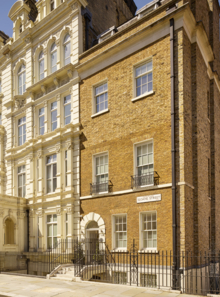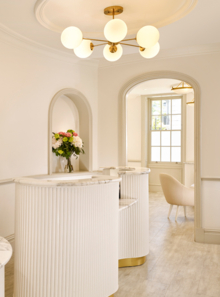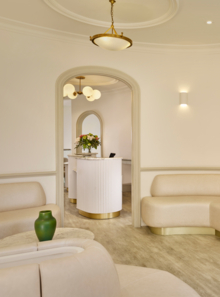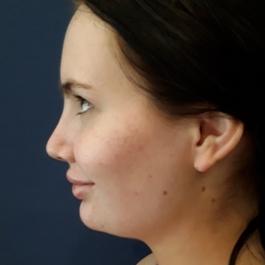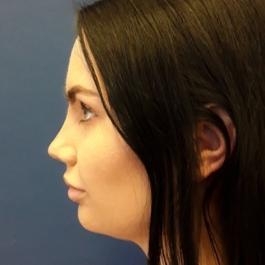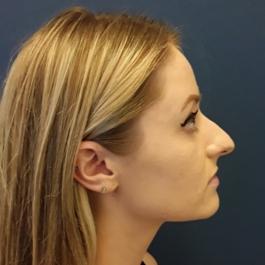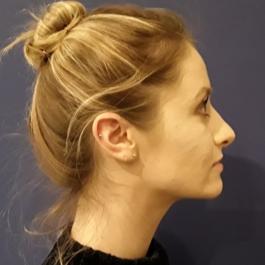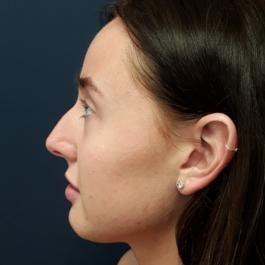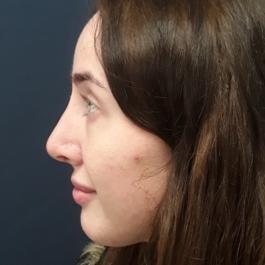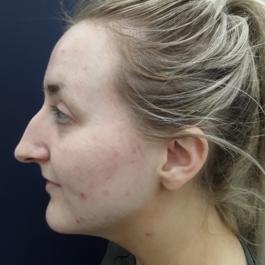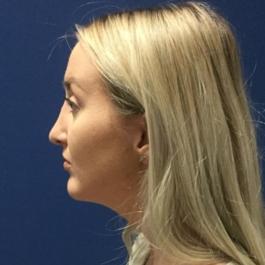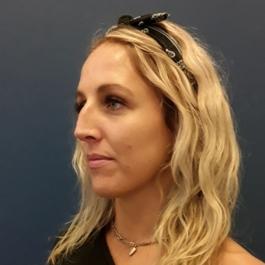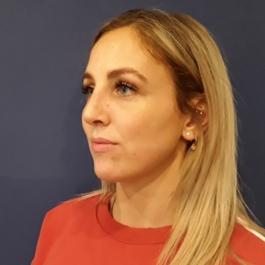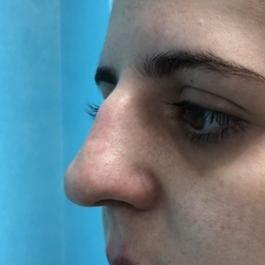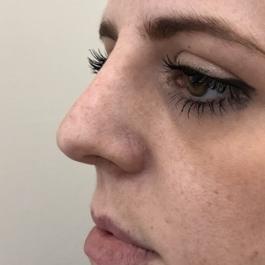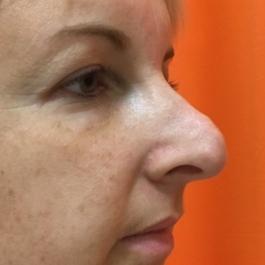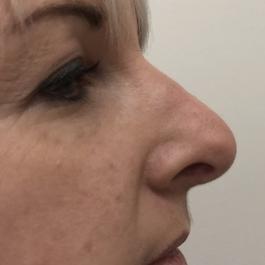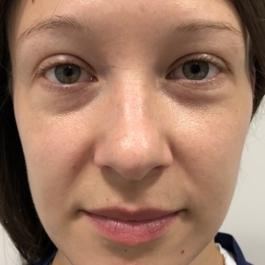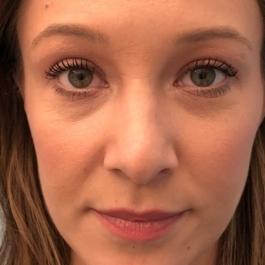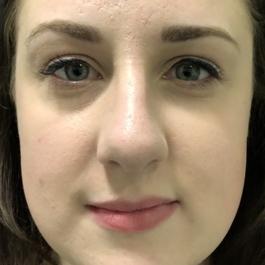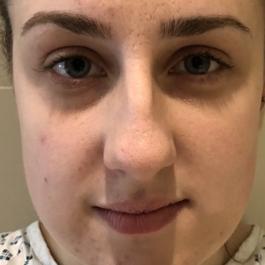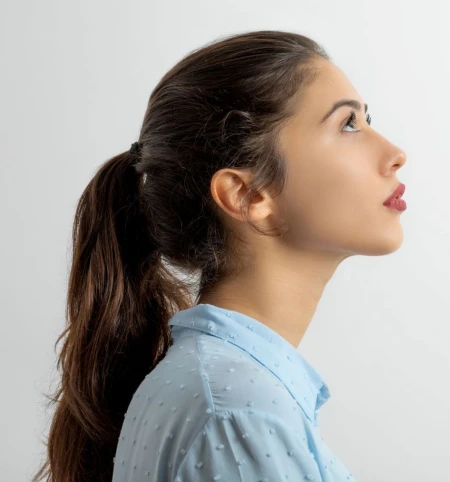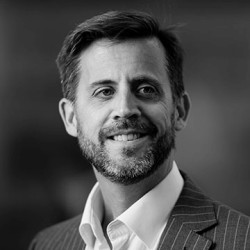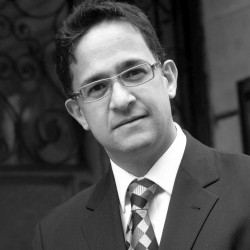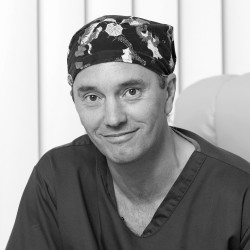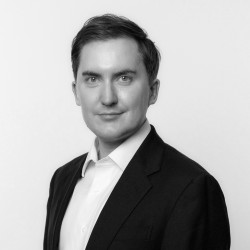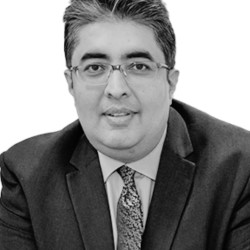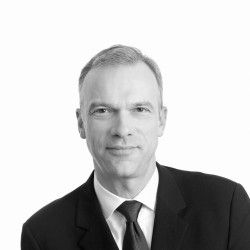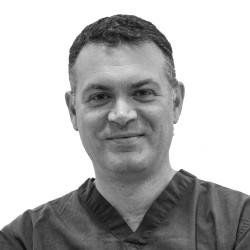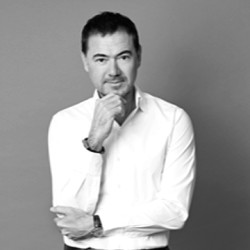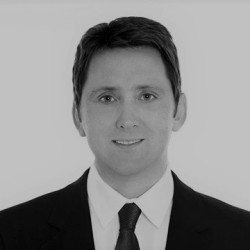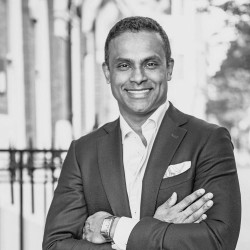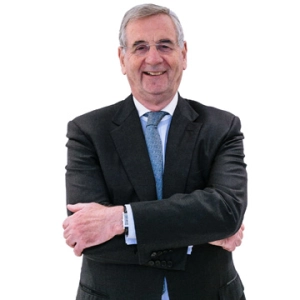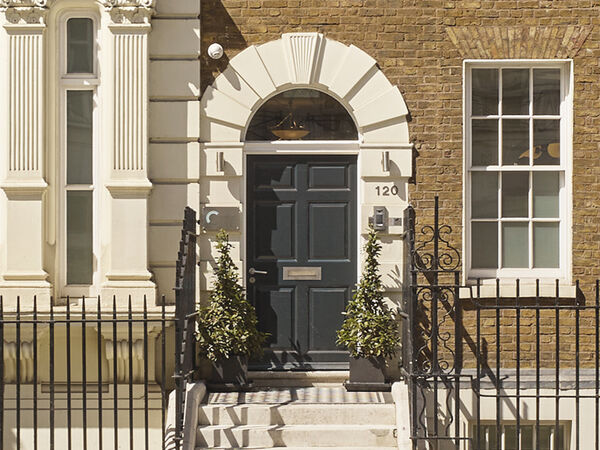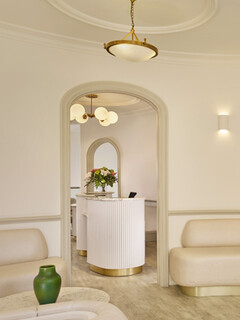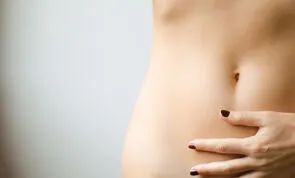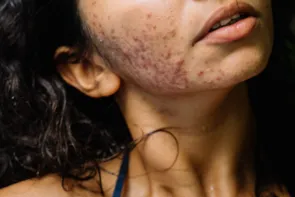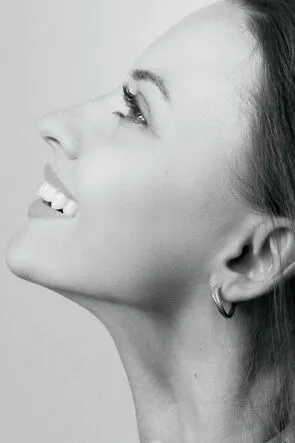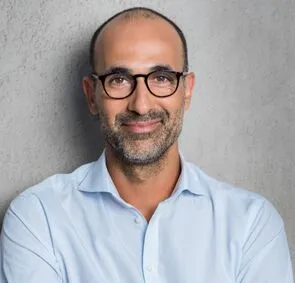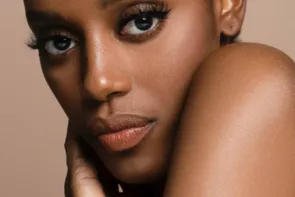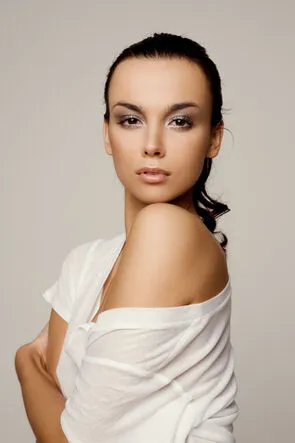Medically Reviewed 28 February 2024,
by Mr. Bryan Mayou (GMC: 1414396) - founder of the Cadogan Clinic and one of the world's leading plastic surgeons
What is Rhinoplasty?
A Rhinoplasty, commonly referred to as a 'nose job,' is a surgical procedure which reshapes, corrects, or reconstructs the nose to achieve enhanced aesthetic proportions. Rhinoplasty surgery is performed under general anaesthetic and usually takes between 90 minutes and 3 hours to complete.
The nose undergoes its final stages of development during puberty, typically reaching maturity by the age of 16. This marks the earliest suitable age for considering a Rhinoplasty procedure.
While Rhinoplasties are often sought for cosmetic reasons, they can also serve a functional purpose by addressing breathing difficulties and mitigating symptoms of conditions like sleep apnea and snoring. In such cases, the surgery may involve interventions such as Septoplasty (correcting the nasal septum) or Submucosal Resection ('SM Resection') to relieve airway blockages.
As specialists in London rhinoplasty procedures, our skilled surgeons can correct physiological and cosmetic concerns safely and effectively, procuring you beautiful results.
| 1 in 5 surgeries performed at the Cadogan Clinic is a Rhinoplasty, and has grown 215% since 2019 in terms of patient volumes. |
Get in touch
Rhinoplasty surgery can also address nose injuries, often resulting from sports-related incidents or physical assaults. Patients undergoing Rhinoplasty for these reasons may be eligible for reimbursement from medical insurance companies.
In the United Kingdom, Rhinoplasty ranks among the top five most common cosmetic surgery procedures, accounting for approximately 10% of all such procedures in 2023 alone.
Given that the nose serves as a central focal point on the face, its size and shape significantly influence how we perceive our overall appearance. If you are dissatisfied with your nose for any reason, Rhinoplasty surgery offers a highly effective solution to bring about the desired changes.
Our team of surgeons comprises leading experts in the field, who are able to address your individual concerns and needs effectively. Cadogan Clinic performs up to 500 nose jobs every year and our team of dedicated surgical advisors will be able to answer your questions, match you with the right surgeon and discuss common questions such as how to get your nose job on finance.
The nose is structurally supported by a framework, consisting of two distinct sections. The upper third is composed of a bony skeleton, while the lower two-thirds are composed of flexible cartilage, similar to the cartilage found in the ear. Acting as a partition between the two airways extending from the nostrils is another layer of cartilage, covered with a protective mucous membrane, known as the septum. This septum serves as a crucial support, preventing the collapse of the cartilaginous portion of the nose.
In many procedures targeting the Caucasian nose, the primary objective involves reducing its size. Consequently, both the bony and cartilaginous framework are skillfully adjusted, allowing the skin to naturally retract, often leaving no noticeable scar.
Open Rhinoplasty
In an Open Rhinoplasty procedure, an incision is made across the columella, which is the skin covering the central strut of the nose separating the two nostrils. This incision extends up and around the rim of the nostrils, allowing the skin to be gently peeled back. This approach grants the surgeon a direct view of the nasal cartilage, which can then be skillfully reshaped. Open Rhinoplasty London surgeries are often employed for complex, challenging cases and are the preferred technique for some surgeons.
Closed Rhinoplasty
Closed Rhinoplasty, doesn't involve an incision across the skin of the columella between the nostrils - meaning there isn’t a scar on the outside. Instead, it is performed through the mucosa lining the inside of the nose. This technique does not provide a direct view of the nasal skeleton, making it a technique only used by more experienced surgeons.
Septo-Rhinoplasty
Septo-Rhinoplasty is a common procedure aimed at improving nasal breathing, typically for individuals with a deviated septum. The septum is the cartilage and bone inside the nose that separates the nostrils. During this surgery, your surgeon makes an incision in the mucosa lining the inside of your nose and lifts it off the bone and cartilage. Any bent or misaligned portions are then straightened to facilitate clear and unobstructed breathing. This procedure not only enhances your ability to breathe but can also improve the overall appearance of your nose.
Rhino-Tip Surgery
Rhino-Tip surgery focuses on altering the shape of the nose by modifying the underlying cartilage structure. Most adjustments are made from inside the nose to minimise visible scarring. Your surgeon can create a refined nasal tip tailored to your unique facial structure. Common causes for Rhino-Tip surgery include addressing a prominent tip, a crooked tip, flared nostrils, or a hooked tip.
East Asian and African Nose Augmentation
Some patients have flatter noses with wider nostrils, which require augmentation rather than reduction. This augmentation can involve raising the bridge line using a synthetic substance or the patient's bone and cartilage harvested from the ear, skull, or rib. In each case, the additional tissue is expertly shaped to achieve the desired result. For nostrils that are too wide, a wedge of tissue can be removed to reduce their width.
East Asian noses may also require surgery on the upper eyelid, particularly at the inner end where webbing can be present.
Non-Surgical Rhinoplasty
Introduced by renowned plastic surgeon Mr Bryan Mayou, the Non-Surgical Rhinoplasty is a procedure that uses fillers, typically hyaluronic acid, to alter and shape the nose without surgery. This approach provides a medium-term solution, as the filler typically lasts for about a year and is not permanent. Some patients opt for Non-Surgical Rhinoplasty as an initial step to visualise the potential results of a long-term surgical Rhinoplasty before committing. Others choose to have regular top-up treatments to maintain their desired appearance.
You can find out more on non surgical rhinoplasty by reading this article about the differences between surgical and non surgical rhinoplasty.
What are the benefits of Rhinoplasty?
The benefits of rhinoplasty are wide-ranging covering both cosmetic and medical concerns. Some of these benefits can be achieved through Closed Rhinoplasty, but others can only be gained through an Open Rhinoplasty procedure. Your surgeon will advise you of the differences between Open and Closed Rhinoplasty techniques, and which technique will be best to help you achieve your goals as part of your consultation. Patients before and after nose jobs can enjoy the following benefits following surgery.
Increase or decrease the size of the nose
Rhinoplasty offers a range of possibilities for nose enhancement. It can effectively reduce both the length and width of the nose through precise surgical techniques.
To reduce the overall length of the nose and make it smaller, adjustments can be made to the septum, the thin wall that separates the nostrils. This may involve reshaping or reducing the septum's size. Additionally, cartilage at the tip of the nose can be modified or removed to achieve the desired outcome. The width of the nose can also be addressed by carefully breaking and repositioning the nasal bone.
Conversely, there are cases where patients seek an increase in the size of their nose. In such situations, bone or cartilage can be harvested from various sources, including the septum or other parts of the body, such as the rib or ear. These materials are then skillfully utilised to augment either the bridge or tip of the nose, achieving the desired enhancement.
Give the nostrils a new shape
Rhinoplasty provides a versatile solution for reshaping the nostrils, which includes reducing the size of prominent or overly large nostrils. Large nostrils, even when in proportion to the rest of the face, can create the illusion of a larger nose. Nostril reduction through Rhinoplasty not only addresses this concern but also works to restore balance and symmetry to the overall appearance of the nose, resulting in a more refined and harmonious look.
Reduce the nasal tip
A skilled Rhinoplasty surgeon can effectively address issues such as a bulbous nose tip by expertly removing or reshaping the cartilage at the nasal tip. This refinement can be achieved through either a closed or open nose job approach. Additionally, if you're dealing with a drooping nasal tip, specialised nasal tip surgery can offer a tailored solution to enhance the appearance and function of your nose.
Reduce the bridge
Many individuals seeking Rhinoplasty express a common desire to address a hump on their nose. To effectively address this issue, the surgeon skilfully removes the excess bone and cartilage responsible for the hump. In some cases, the nose may need to be carefully fractured, allowing the remaining bone segments to be strategically repositioned closer together, ultimately resulting in a refined and narrower nose.
Enhance the balance between other facial features
An oversized nose may dominate the facial appearance and disrupt the harmony of other facial features. Rhinoplasty serves as a transformative procedure to restore this delicate balance to the face. For those with a significantly crooked nose, addressing its alignment can help harmonise the overall facial features, promoting a more symmetrical and aesthetically pleasing look.
Have a positive effect on your overall facial aesthetic
Enhancing the size, shape, or appearance of the nose can have a profound impact on the overall facial aesthetic. This transformation often redirects attention away from the nose area, drawing focus to other captivating aspects of the face, resulting in a more balanced and harmonious facial appearance.
Correct a deviated septum
A deviated septum, when it shifts away from its natural alignment, can lead to troublesome breathing issues and increase susceptibility to recurrent nasal infections. Often, injuries sustained in contact sports like rugby or boxing are frequent culprits behind the development of a deviated septum.
Improve breathing
Functional Rhinoplasty focuses on reshaping the nose to enhance airflow and facilitate better drainage. Breathing difficulties can disrupt sleep patterns and even contribute to the development of conditions like obstructive sleep apnoea. Both naturally occurring crooked noses and those damaged by trauma or sports-related injuries can be the root cause of such breathing problems.
In some cases, the NHS may provide funding for Rhinoplasty when it's necessary to alleviate these breathing issues.
Improving confidence and self esteem
The nose holds a central position on the face, often becoming the focal point of attention when meeting someone. Discontent with the size, shape, or overall appearance of your nose can significantly affect your self-confidence and self-esteem. Undergoing a nose job can offer a substantial boost to your confidence and self-esteem, leading to an overall enhancement of your mental well-being.
Why do people have it?
The size and shape of one's nose can be a source of insecurity and unhappiness for many individuals, regardless of gender. A nose job offers a solution that not only enhances physical appearance but also boosts self-confidence and overall well-being.
Beyond its cosmetic benefits, a nose job can be a game changer for various medical concerns, including the correction of breathing difficulties and the alleviation of symptoms associated with sleep apnoea. Whether pursued for aesthetic or medical reasons, a nose job stands as the most effective and immediate corrective procedure in such cases.
The surge in video calls and selfies has led to increased scrutiny of facial aesthetics among men and women. A nose job not only enhances the nose's appearance and function but also brings it into proportion with other facial features. This harmonisation can contribute to heightened self-confidence and improved mental well-being for all genders.
By addressing both the physical and psychological aspects of an individual's well-being, rhinoplasty empowers people to feel better about their looks, ultimately leading to increased self-confidence and a greater sense of happiness.
For a view of some of our many thousands of happy rhinoplasty patients, why not view our rhinoplasty before and after gallery
Who is suitable?
Your surgeon will assess whether you are suitable for a nose job as part of your one to one consultation. They will decide your are suitable if:
- You are in good overall physical and psychological health.
- You experience concerns related to the size or shape of your nose, whether for cosmetic or medical reasons.
- You have realistic expectations regarding the achievable outcomes of the surgery.
- You seek to address damage or injuries affecting your nose.
- You struggle with issues such as loud snoring, sleep apnea, or breathing difficulties.
Differences in male and female Rhinoplasty
Rhinoplasty is embraced by both men and women. Remarkably, in 2020, according to statistics from The British Association of Aesthetic Plastic Surgeons, Rhinoplasty ranked as the most-performed aesthetic surgery among men in the UK.
However, while the techniques of nose job surgery can apply to both genders, there exist significant distinctions between the surgical goals for men and women. Beyond the evident anatomical differences, men and women have unique aspirations for their rhinoplasty procedures.
Male Rhinoplasty seeks to emphasise and enhance the nasal structure, resulting in a straighter angle and stronger definition. This approach aims to bestow a more distinguished and chiselled appearance. Male Rhinoplasty can also address noses marked by irregularities or a crooked contour due to previous trauma or sports-related injuries.
In contrast, Female Rhinoplasty often pursues a softer, subtler transformation of the nose. This typically involves a slightly upturned nasal tip and the correction of a minor dorsal hump, which is a bony or cartilaginous prominence along the bridge of the nose. It's important to note that our experienced surgeons can incorporate these characteristics into Male Rhinoplasty if that aligns with the patient's desires. However, men are less inclined to seek a nose that is overly narrow with a pinched nasal tip.
One of the remarkable aspects of rhinoplasty lies in its adaptability to cater to each individual's unique requirements.
The anatomical distinctions between the male and female nose are quite noticeable. Men typically possess longer noses characterised by a thicker layer of skin. This thicker skin layer contributes significantly to the occurrence of a bulbous nose tip, appearing as a substantial mass or swelling on the lower portion of the nose. Interestingly, this condition is more frequently observed in men, particularly in those aged between 50 and 70 years old - and can be related to skin conditions such as Rosacea.
Male Rhinoplasty can often be complemented by other cosmetic procedures, such as Chin Augmentation with an implant, further accentuating masculine facial traits.
At the Cadogan Clinic, we offer five distinct types of nose job procedures. Schedule a consultation with one of our experienced surgeons to explore the most suitable Rhinoplasty option for achieving your desired aesthetic goals.
What is an Ultrasonic Rhinoplasty?
Ultrasonic Rhinoplasty is an innovative procedure which uses a tool called a Piezo insert, to make incisions within your nose. Piezos can effectively cut through bones and cartilage, without damaging soft tissue. This means the incisions within the nose are very precise and leave less damage throughout the nose than traditional Rhinoplasty techniques. By reducing the overall trauma to the nose, recovery is easier and complications are fewer, reducing the need for secondary procedures.
![]() Aesthetics Medicine Awards
Aesthetics Medicine Awards![]()





